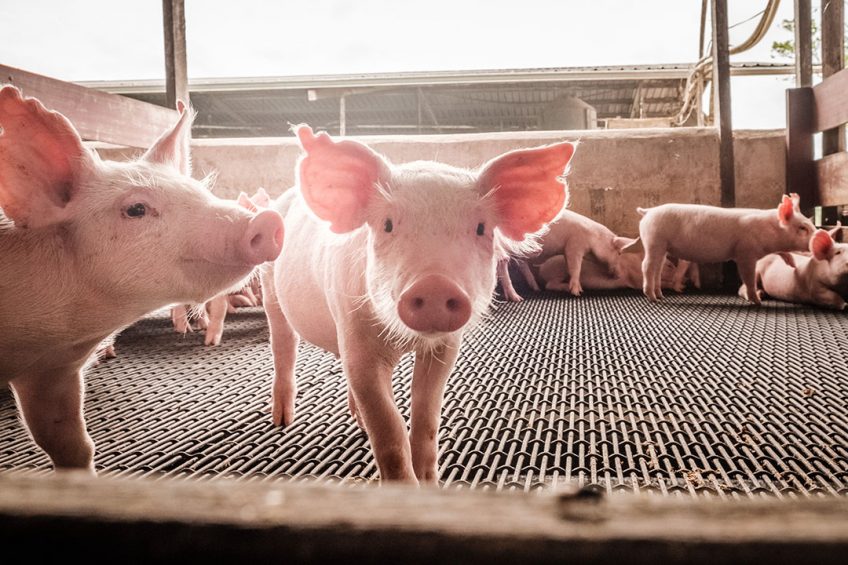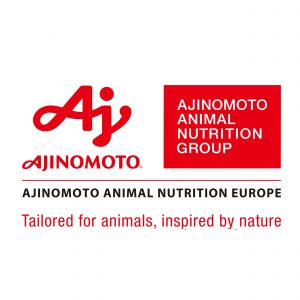Agile amino acids for piglet gut health

In the context of reducing antibiotic and zinc oxide use, the spotlight is now on piglet gut health. Reducing dietary protein content is one of the main drivers for reducing gut disorders, however this must not come at the expense of performance objectives.
Weaning is a critical period for piglets: young animals are removed from the sow, transitioned from liquid to solid feed, and mixed with other litters in a new environment. Those changes generate stress and usually have dramatic effects on gut health and feed intake.
It has been reported that 50% of piglets do not consume any food in the first 24-hours post-weaning. All these changes lead to discomfort, diarrhoea, growth check and sometimes mortality. There is a need to find new nutritional strategies, catering to the growing pressure to reduce antibiotics and zinc oxide usage while preserving technical-economic performance. Driven by the challenge to improve animal production sustainability, dietary protein reduction needs further consideration. We need to reconsider the way amino acid nutrition in diet formulation is addressed.
There are many examples of the need to apply agile amino acid nutrition, including:
- the context of formulation;
- optimising targeted criteria;
- interactions between amino acids associated with protein reduction;
- limiting effects of applying several amino acids simultaneously;
- the functional roles of amino acids.
Reducing protein levels
A lower supply of dietary protein reduces the amount of undigested protein in the distal intestine and results in a better acidification (and digestion) of the bolus. It also reduces protein microbial fermentation, preventing the development of pathogenic bacteria. Together, these effects are responsible for reduced gut disorders and less diarrhoea (Figure 1).
Figure 1 – Literature review on the effect of dietary protein level on faecal score or diarrhoea index (expressed in % of the high protein diet).

Low dietary protein strategy is now recognised as an effective method to reduce gut disorders, leading to its implementation in Europe in the past 10 years. Piglets have a specific need for indispensable amino acids, but not for dietary protein, hence dietary amino acid levels must be managed. Of the 20 proteogenic amino acids, nine are indispensable for piglets: lysine (Lys), methionine (Met), threonine (Thr), tryptophan (Trp), valine (Val), isoleucine (Ile), leucine (Leu), histidine (His) and phenylalanine (Phe).
While these were available in excess in the past, some are now either limiting or co-limiting; this must be carefully monitored to avoid risking performance. However, depending on the raw material situation, the matrix used, the level of protein, and the desired performance criteria, amino acid nutrition becomes increasingly contextual. For example, in a wheat/barley-based diet, leucine may be more limiting than isoleucine, in contrast to a leucine-rich corn-based diet.
Agile amino acid nutrition
Amino acid requirements are estimated by dose-response studies, and meta-analyses are used to integrate the variability and estimate an average response. The ideal protein concept is used in feed formulation in which amino acids are expressed in a fixed ratio to lysine, the primary limiting amino acid.
Nevertheless, this robust model does not account for the various contexts of application of the new step of observed dietary protein reduction. The response to each amino acid has to be better accounted for at the time of application. Figure 2 presents meta-analysis studies of piglet responses to isoleucine, leucine and histidine as examples, confirming the increasing need for agile amino acid nutrition.
Figure 2 – Meta-analyses of piglet responses (ADG and ADFI) to dietary level of isoleucine (Ile), leucine (Leu) and histidine (His).

This meta-analysis study highlights that:
- piglet daily gain and feed intake respond to leucine, isoleucine and histidine;
- response for growth (ADG) is stronger than response for feed intake (ADFI), independent of amino acid;
- growth response to isoleucine is mainly driven by feed intake; this is less applicable to leucine, indicating that leucine also plays a role on feed efficiency regulation,
- piglet response depends on the amino acid under consideration and the optimisation criteria.
Amino acid interactions and functions
Dietary amino acids are subject to interaction; their response can vary depending on the level of deficiency or excess of other amino acids. For example, the branched-chain amino acids (valine, isoleucine and leucine) share the same catabolic pathway under the control of leucine. Leucine excess has been shown to increase the catabolism of the 3 branched-chain amino acids reducing their availability for protein synthesis, leading to impaired feed intake and less growth.
To avoid this negative effect, it is necessary to insure minimum isoleucine and valine dietary levels. Piglets are able to detect an imbalanced amino acid supply and will react with lower feed intake. For instance, in 2018, in an experiment led by Dr Alfons Jansman, Wageningen University & Research, the Netherlands, piglets fed valine deficient diets with an excess of other indispensable amino acids had a 9% reduced feed intake .
Besides their role as building blocks of proteins, amino acids are involved in many other functions: e.g. gene expression, cell signalling, gut integrity, cell proliferation, immunity modulation, feed intake control, and energy homeostasis. Many studies have investigated the direct or indirect roles of amino acids on piglet gut health. Each amino acid targets different parameters related to gut health, so potential synergies may appear.
Taken together, these data highlight the possibility to implement tailored feeding practices in piglets by achieving feed optimisation with different amino acid levels. This depends on the specific context (nutritional values, feedstuffs, etc.) and the technical-economic objectives.
Efficient implementation
In conclusion, efficiently implementing low protein piglet diets is key, while keeping performance optimal. For this reason, Ajinomoto Animal Nutrition Europe developed AJI-CS, an amino acid-based customised solution approach. The solution allows characterising feedstuffs, formulating digestible amino acids, using a net energy system, and implementing an agile amino acid decision-making process adapted to specific contexts and production objectives.
References available on request.
Authors: Aude Simongiovanni, William Lambert and Etienne Corrent, Ajinomoto Animal Nutrition Europe


